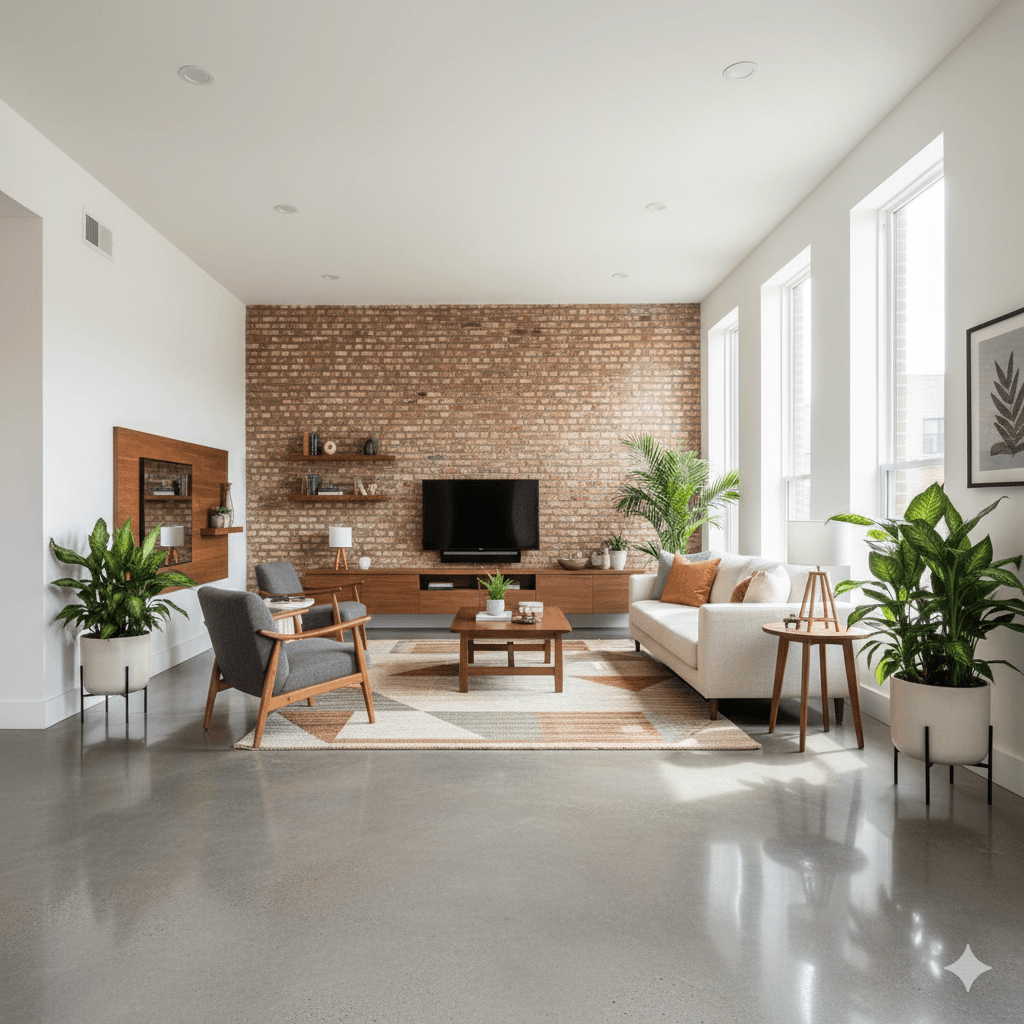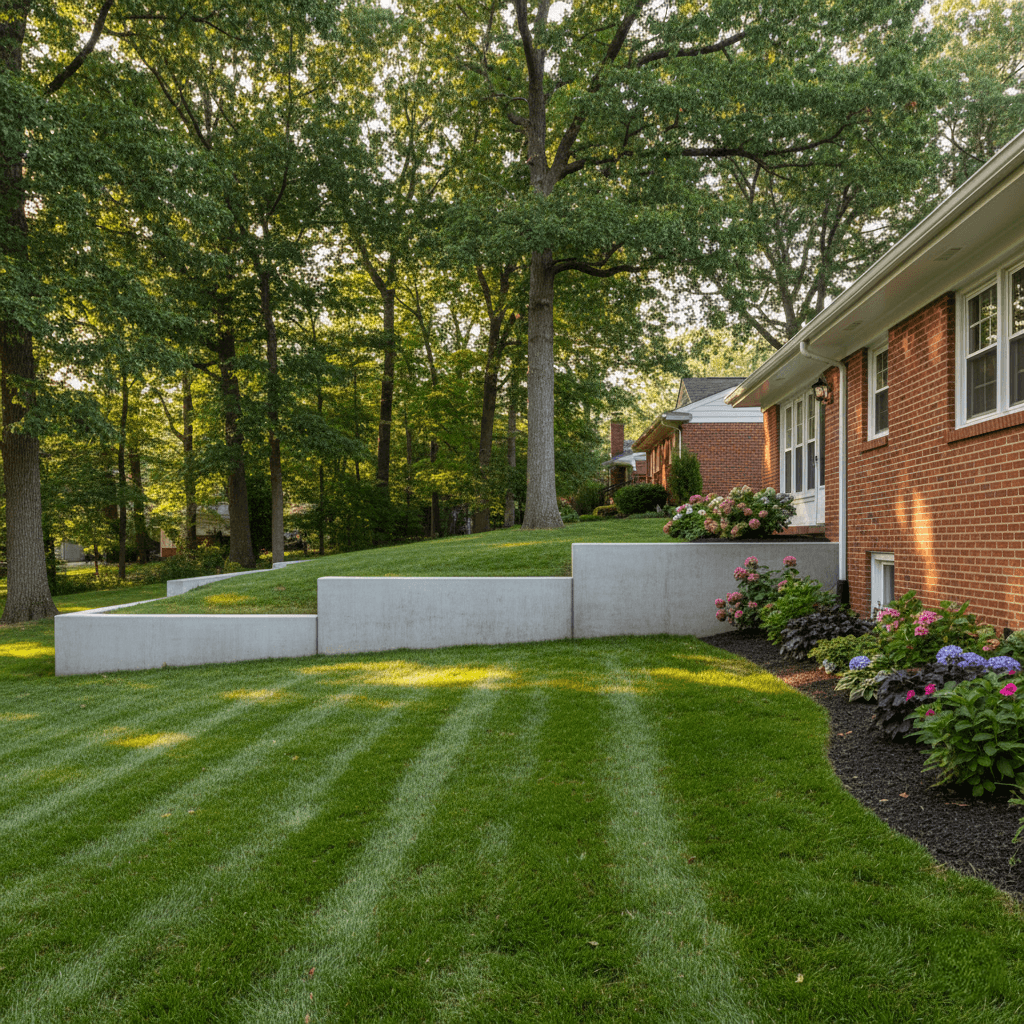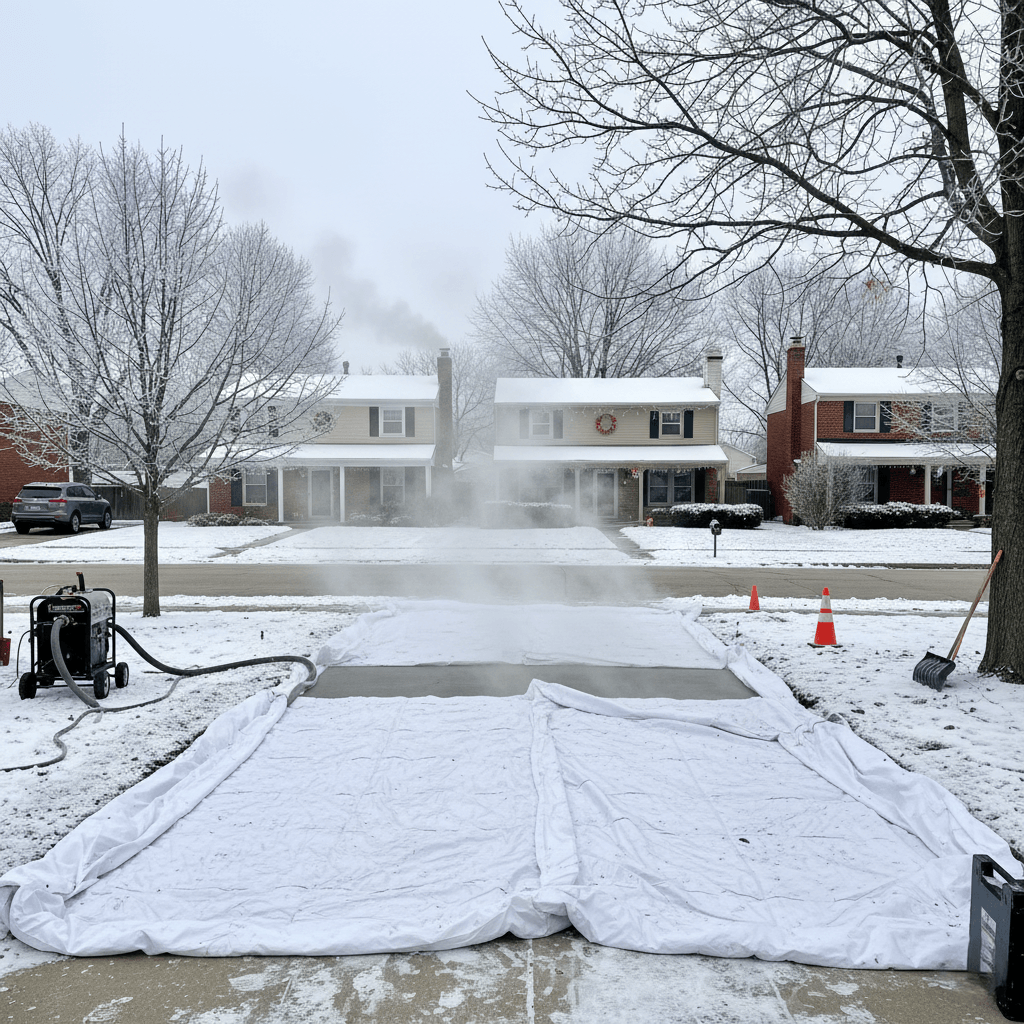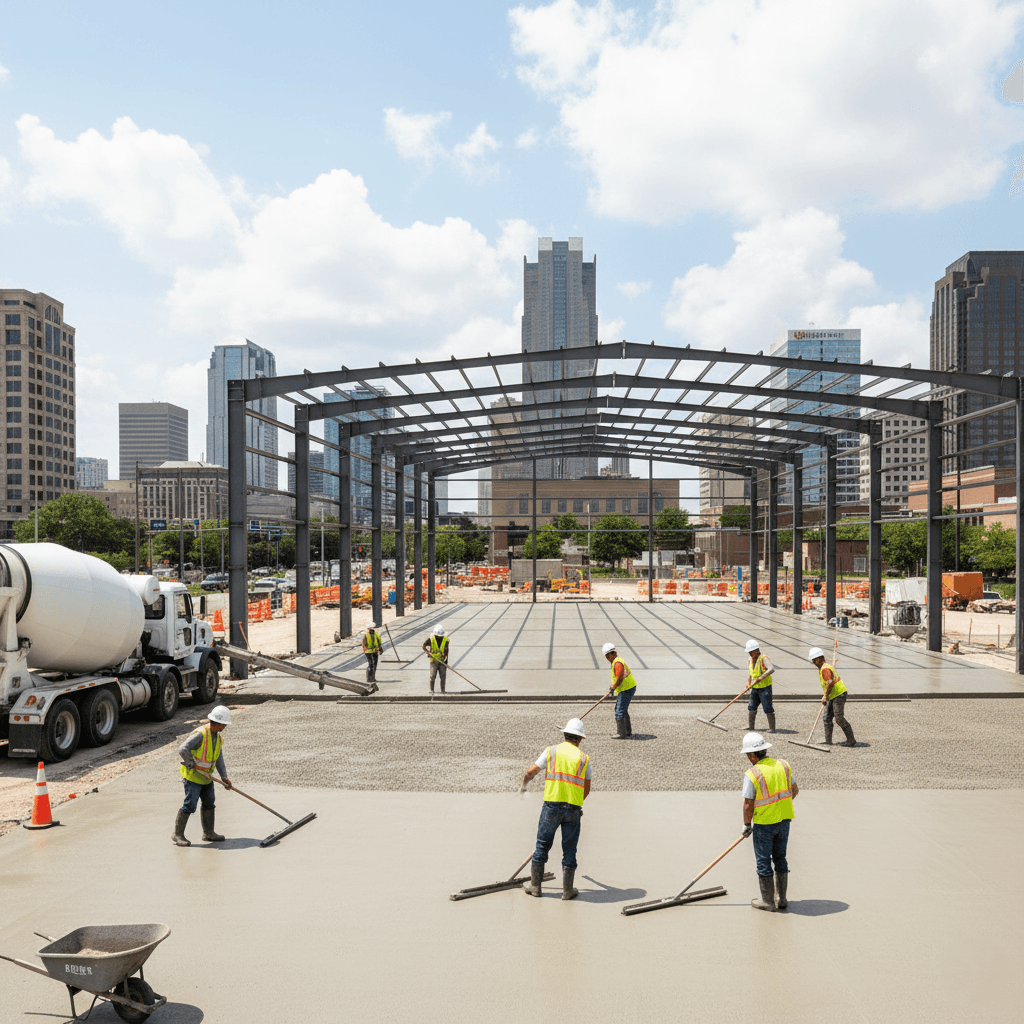
Long-Term or Quick Fix? St. Louis Concrete Repair Guide
Concrete repair St. Louis
St. Louis homeowners facing damaged concrete surfaces must decide between quick temporary patches and comprehensive permanent solutions, a choice significantly affecting both immediate costs and long-term expenses. Understanding the differences between repair approaches helps property owners make informed decisions, balancing budget constraints against durability requirements. Missouri’s challenging climate with freeze-thaw cycles, expansive clay soils, and temperature extremes tests concrete repair longevity regardless of the method chosen. Properties from Kirkwood to Florissant benefit from matching repair strategies to specific damage types, intended use, and realistic maintenance expectations. Selecting appropriate concrete repair methods protects investments while avoiding repeated repairs that ultimately cost more than durable solutions implemented initially.
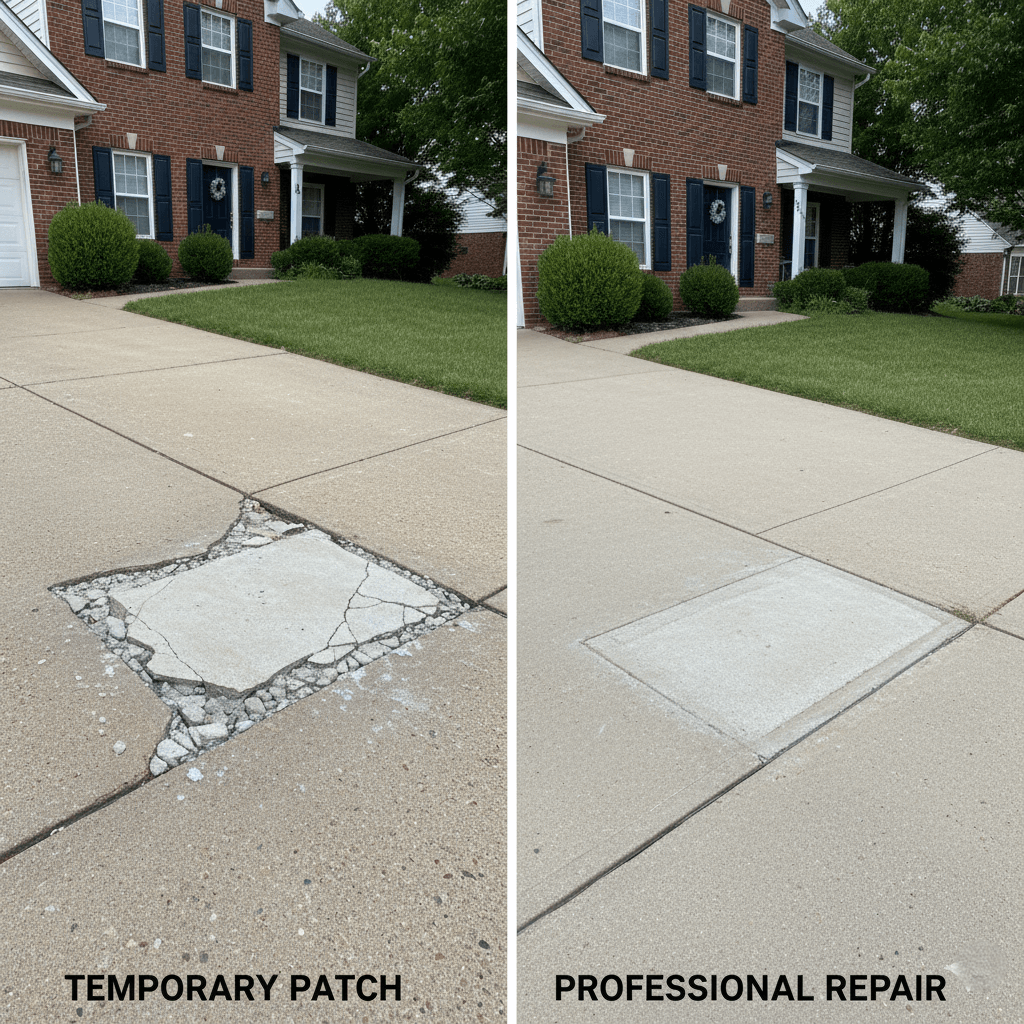
Understanding Quick Fix Concrete Repair Solutions
Quick fix repairs address immediate concerns using readily available materials and simple application techniques. Concrete patch compounds fill cracks, chips, and small voids, providing cosmetic improvements within hours. These products typically consist of cement-based mixtures requiring minimal surface preparation and basic tools for application. Hardware store patch kits cost $10 to $50 and handle minor damage temporarily. Concrete caulking seals cracks, preventing water infiltration and further deterioration. Surface sealers protect weathered concrete from moisture and staining. Properties in Webster Groves and Crestwood often employ quick fixes for non-critical applications or temporary solutions while planning comprehensive repairs. These approaches serve specific situations but rarely deliver the long-term performance of professional solutions.
When Quick Fixes Make Sense
Temporary repairs prove appropriate in several specific circumstances where permanence matters less than immediate functionality. Rental properties awaiting sale benefit from cosmetic improvements, enhancing marketability without major investment. Homeowners planning a complete concrete replacement within a year or two use patches, bridging the gap until full renovation. Emergency repairs preventing safety hazards provide immediate protection while owners arrange professional services. Seasonal repairs made late in the fall might suffice until spring, when comprehensive work becomes practical. Properties throughout Maplewood and Brentwood facing budget constraints sometimes choose staged approaches, implementing quick fixes initially, then upgrading to permanent solutions when finances allow. However, understanding that temporary repairs require repeated application helps owners budget realistically for ongoing maintenance costs.
Limitations of Temporary Concrete Repair Approaches
Quick-fix solutions face inherent limitations that homeowners should understand before choosing these methods. Patch materials experience different expansion and contraction rates than the surrounding concrete, causing separations during temperature fluctuations. Missouri’s freeze-thaw cycles particularly stress temporary repairs as water infiltrates the interfaces between patches and original concrete. Most patch products bond through adhesion rather than structural integration, creating mechanically weak connections vulnerable to failure. Surface preparations for quick fixes rarely match the thorough cleaning and profiling required for durable repairs. Properties in Clayton and Ladue, discovering repeated patch failures, should recognize that underlying problems remain unaddressed despite cosmetic improvements, with progressive deterioration continuing beneath superficial repairs.
Cost Implications of Repeated Temporary Repairs
While quick fixes appear economical initially, repeated applications accumulate significant expenses over time. A $30 patch kit applied annually for five years totals $150 plus labor, potentially exceeding the costs of proper repairs lasting decades. Time spent on repeated maintenance adds hidden costs through lost productivity and convenience. Temporary repairs failing at inopportune times create emergencies requiring expensive rush services. Progressive damage worsening beneath patches often necessitates more extensive repairs than the original problems demanded. Homeowners throughout University City and Richmond Heights should calculate long-term costs, comparing repeated temporary fixes against single permanent solutions. Furthermore, poor repairs potentially damage surrounding concrete, expanding repair areas and increasing eventual professional service costs beyond what prompt proper repairs would have required initially.
Professional Long-Term Concrete Repair Methods
Permanent concrete repair solutions employ advanced materials and proven techniques addressing root causes rather than merely covering symptoms. Epoxy injection fills cracks with high-strength materials that bond structurally with existing concrete, restoring load-bearing capacity. Carbon fiber reinforcement prevents crack propagation while strengthening damaged areas. Concrete leveling using polyurethane foam or grout injection corrects settlement issues, causing surface problems. Full-depth repairs, removing deteriorated concrete and replacing it with properly bonded materials, eliminate weaknesses permanently. Properties in Chesterfield and Ballwin investing in professional repairs benefit from warranties, proper surface preparation, and materials engineered specifically for concrete restoration rather than generic patches.
Advanced Repair Technologies
Modern concrete repair methods incorporate engineering advances, delivering superior performance over traditional approaches. Polymer-modified repair mortars provide enhanced bonding, flexibility, and weather resistance compared to standard cement mixes. Geopolymer-based materials offer lower carbon footprints while exceeding conventional concrete strength and durability. Self-healing concrete, containing bacteria or capsules that seal cracks autonomously, represents emerging technology showing promise for future applications. Fiber-reinforced repair compounds distribute stresses, preventing crack reformation. Homeowners throughout Maryland Heights and Bridgeton benefit from these material advances when working with contractors using current best practices. Moreover, proper curing protocols ensuring repair materials achieve design strength prove critical for long-term performance, differentiating professional installations from DIY attempts that often fail through inadequate moisture control during critical hardening periods.
Structural vs Cosmetic Concrete Repair Needs
Distinguishing between structural and cosmetic damage helps owners select appropriate repair strategies matching problem severity. Structural repairs address issues threatening concrete integrity or building safety, including foundation cracks, settlement, spalling, exposed reinforcement, or load-bearing surface failures. These situations demand professional assessment and permanent solutions regardless of cost considerations. Cosmetic damage affecting appearance without compromising function might accept temporary repairs, including surface staining, minor hairline cracks, or shallow spalling on non-critical surfaces. Properties in Fenton and Arnold should prioritize structural concerns over cosmetic issues when allocating repair budgets. However, understanding that cosmetic problems often progress into structural issues over time encourages addressing all damage promptly before escalation.
Damage Assessment and Prioritization
Proper damage evaluation requires a systematic inspection identifying all problems and their severity levels. Visual examination reveals surface issues, but probing with hammers or chains detects hidden delamination. Crack width measurements using crack gauges document problem severity. Monitoring crack changes over time determines whether damage remains stable or actively progresses. Properties throughout Wildwood and Ellisville benefit from professional inspections, providing comprehensive assessments beyond what homeowners typically identify themselves. Structural engineers offer unbiased evaluations distinguishing cosmetic concerns from serious problems. Furthermore, addressing root causes like poor drainage or expansive soils proves essential regardless of the repair method chosen, as best repairs fail when underlying problems continue stressing concrete, creating repetitive damage cycles.
Climate Considerations for St. Louis Repairs
Missouri’s climate significantly influences concrete repair performance and method selection. Freeze-thaw cycles, occurring 40 to 60 times annually in St. Louis, test repair material durability as water infiltration and ice formation stress interfaces. Summer temperatures exceeding 95 degrees with high humidity affect curing and material performance. Clay soils, expanding and contracting with moisture variations, create ongoing stresses. Repairs must accommodate these environmental challenges through proper material selection and application techniques. Properties in Olivette and Overland should recognize that repair materials rated for their climate zones perform better than generic products. Professional contractors familiar with local conditions select appropriate materials and timing for optimal results.
Seasonal Repair Timing
Installation timing affects repair success, particularly for permanent solutions requiring specific temperature and moisture conditions. Spring and fall offer ideal moderate temperatures for most repair materials. Summer heat demands rapid work and special curing procedures, preventing premature drying. Winter installations face temperature limitations, as most repair materials require above-freezing conditions during application and initial curing. Properties throughout Affton and Lemay, panning repairs should schedule work during favorable conditions. Quick fixes often work across broader temperature ranges than permanent solutions, providing one advantage for temporary approaches. However, repairs installed during poor conditions rarely achieve design performance regardless of quality, making proper timing essential for long-term success. Moreover, addressing concrete problems before winter prevents freeze-thaw damage and worsening conditions during the coldest months, when repairs become impractical.
DIY vs Professional Concrete Repair Services
Homeowners face decisions about self-performing repairs versus hiring professionals based on damage severity, available skills, and desired outcomes. DIY approaches suit minor cosmetic repairs using patch kits, caulking, or sealers on non-critical surfaces. These projects cost $10 to $100 in materials plus homeowner time. Professional services handle structural repairs, extensive damage, or situations requiring specialized equipment and expertise. Costs range from $500 to $5,000, depending on project scope, but include proper diagnosis, material selection, surface preparation, and warranties. Properties in Des Peres and Town and Country, weighing these options, should honestly assess skills, time availability, and repair importance. However, recognizing that improper DIY repairs often worsen problems helps homeowners avoid costly mistakes requiring professional correction.
Professional Service Value Propositions
Professional concrete repair contractors offer several advantages beyond simple installation services. Accurate problem diagnosis identifies root causes rather than just addressing visible symptoms. Experience with various repair methods allows for selecting optimal approaches for specific situations. Specialized equipment, including injection systems, leveling apparatus, and surface preparation tools, ensures proper implementation. Quality materials engineered for concrete repair outperform hardware store products. Warranties backing workmanship and materials provide protection unavailable with DIY approaches. Properties throughout Sunset Hills and Shrewsbury investing in professional services benefit from these value additions. Furthermore, established contractors maintain relationships with material suppliers, accessing the latest products and technologies unavailable to DIY consumers, keeping repair methods current with industry advances, and delivering superior long-term performance.
Cost-Benefit Analysis for Repair Decisions
Choosing between quick fixes and permanent repairs requires evaluating both immediate costs and long-term expenses. Quick patches costing $30 to $100 seem economical but require repeated applications, potentially totaling hundreds over several years. Professional repairs costing $500 to $3,000 deliver decades of service without repetition. Cost per year of service often favors permanent solutions despite higher initial investment. Properties in Cottleville and St. Peters should calculate lifecycle costs rather than just initial expenses. However, situations involving planned concrete replacement within short timeframes justify temporary approaches, avoiding unnecessary investment in doomed surfaces. Understanding that deferred maintenance compounds problems helps motivate timely, proper repairs, preventing escalating costs.
Return on Investment Considerations
Quality concrete repairs deliver value through multiple channels beyond mere surface restoration. Proper repairs maintain property values, whereas deteriorated concrete diminishes. Safety improvements from eliminating trip hazards reduce liability risks. Preventing water infiltration protects foundations and prevents costly moisture damage. Well-maintained concrete enhances curb appeal, benefiting property marketability. Properties throughout the St. Louis metro area that invest appropriately in concrete maintenance protect overall real estate investments. Moreover, addressing problems promptly when repairs remain straightforward avoids emergency interventions costing multiples of preventive maintenance while minimizing disruption to daily life. At St. Louis Concrete Works, we help homeowners evaluate concrete repair options throughout the region, providing honest assessments distinguishing situations benefiting from quick fixes versus those demanding permanent solutions, delivering professional concrete repair services using proven methods and quality materials that address root causes while providing long-term performance in Missouri’s challenging climate conditions.

